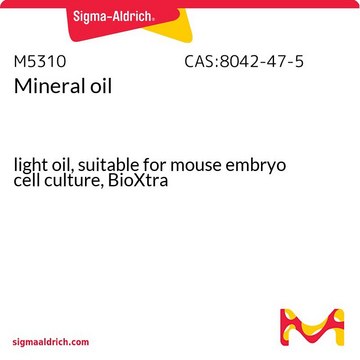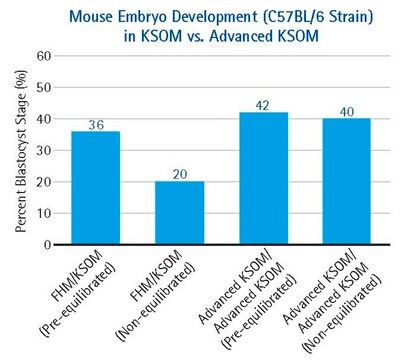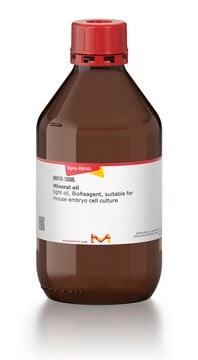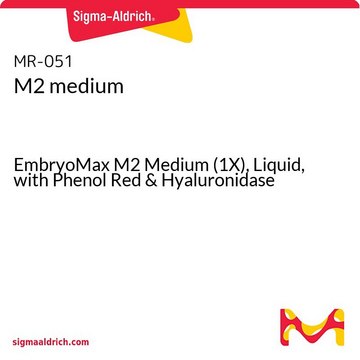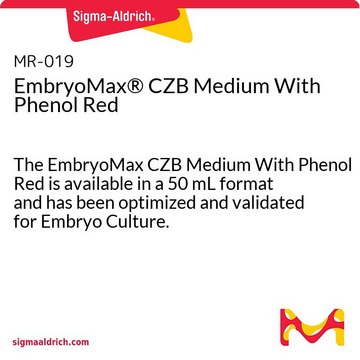Kluczowe dokumenty
M7167
M2 medium
With HEPES, without penicillin and streptomycin, liquid, sterile-filtered, suitable for mouse embryo cell culture
Synonim(y):
Cell Culture M2, Cell Culture Medium, M2 Medium Solution
About This Item
Polecane produkty
Poziom jakości
sterylność
sterile-filtered
Formularz
liquid
warunki przechowywania
protect from light
metody
cell culture | embryo: suitable
zanieczyszczenia
endotoxin, tested
komponenty
HEPES: 5.42726 g/L
NaHCO3: 0.35 g/L
glucose: 1.0 g/L (Dextro)
phenol red: 0.0106 g/L
sodium pyruvate: 0.0363 g/L
Warunki transportu
ambient
temp. przechowywania
2-8°C
Szukasz podobnych produktów? Odwiedź Przewodnik dotyczący porównywania produktów
Zastosowanie
M2 Medium is a further modification of M16 that substitutes HEPES buffer in place of some of the bicarbonate. M2 is used for collecting and handling embryos for prolonged periods outside a CO2 incubator.
Jakość
Rekonstytucja
Komentarz do analizy
polecane
Kod klasy składowania
10 - Combustible liquids
Klasa zagrożenia wodnego (WGK)
WGK 3
Temperatura zapłonu (°F)
Not applicable
Temperatura zapłonu (°C)
Not applicable
Wybierz jedną z najnowszych wersji:
Masz już ten produkt?
Dokumenty związane z niedawno zakupionymi produktami zostały zamieszczone w Bibliotece dokumentów.
Klienci oglądali również te produkty
Protokoły
Creating Transgenic Mice using CRISPR-Cas9 Genome Editing
Nasz zespół naukowców ma doświadczenie we wszystkich obszarach badań, w tym w naukach przyrodniczych, materiałoznawstwie, syntezie chemicznej, chromatografii, analityce i wielu innych dziedzinach.
Skontaktuj się z zespołem ds. pomocy technicznej



